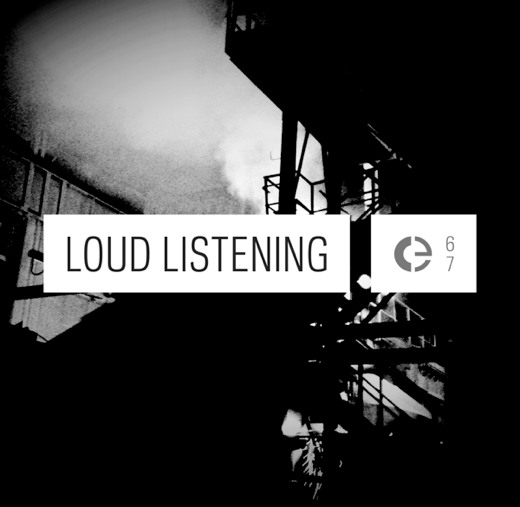
It’s time again to put a focus on the back catalogue of CRÓNICA as part of the Fluid Label Focus series with ths 2011 album by JANEK SCHAEFER titled DOUBLE EXPOSURE. This Digital Album is a 12 track selection of music JANEK SCHAEFER made for compilations, installations and other projects he was invited to create music for. While indeed there’s a variety of releases, installations and theatre projects these pieces are taken from, SCHAEFER has compiled this album to actually be a second “exposure†of this material to the listeners, creating a flowing album of music rather than an archival compilation with a focus on bringing this material together in contexts that will appear in the mind and imagination of the listeners. The album’s track list is also divided in 4 “sidesâ€, a bit like a double cassette tape album, matching music from various years together this way. This Digital Album comes with the album cover in good resolution, the 12 album tracks in 16-bit/44.1kHz CD quality and a PDF file with an album description, thank you note, track list featuring track by track info on where the pieces were taken from as well as source links, the label link and distribution info and additional artwork photos on both pages of the PDF file.
DOUBLE EXPOSURE starts with A1: Spark Rising Over the Lights of Scarlett Heights on Side 1. A calm piece featuring music box, cello and piano. In the descritpion it says that the piece was composed for a site-specific play titled “The Mill – City Of Dreams†which was presented in a deserted weaving mill in Bradford. A photo of Bradford city night-lights was laid over the score paper of the music box to produce the central theme. And indeed the music has a kind of “shape†to it, with the tones of the music box and cello twirling around a (for the listener) invisible shape, creating an atmosphere of peace and comfort but there’s also some cool wind blowing through the streets. A nice little interlude to begin this album with. Next up is A2: Broadstairs Childrens Piano Trio, a piece which is made up of layered loops of music for piano, gradually moving in organic waves of earth like sonic textures, with the mellow sound of the piano like glimmering hidden minerals. The music is indeed rather minimalist in the composition but the “waving†sound of the spectrum and progressively changing arrangement of layers creates an ambience that is not only meditative but also has a lot of small details and movements within the sound that are interesting to focus on while listening. Shifting from layer to layer as the music calmly flows. Then on A3: Requiem for West Wittering we have a similar approach, although here the source sounds themselves are more filtered and diffuse, like ambient pads the vinyl recordings subtly shift into one another, again moving in waves both in arrangement and spectrum. There are also some subtle field recordings in this piece however, which are especially audible in the beginning with the sound of crows as well as more pronounced crackles and ticks and pops from the vinyl itself. At one point there is also a recording that pops up that might be a field recording (which I guessed from a very soft but still audible high frequency whine from the recording) but it does blend in rather well with the vinyl crackles and with this SCHAEFER shows his strength at immersive and expertly shaped blends of soundscape and deeply intriguing atmospheric music. Then we get to Side 2 with B1: City of Dreams – Theme Tune, a long piece that was again composed for “The Mill – City of Dreams†play. This piece featured as entrance title music in the play. Ethereal and droning, the theme tune has ab even more subtle atmosphere to it than some of the other pieces on this album but also with hints of contemporary (classical) music. The piano driven piece features layered loops of constantly ascending scales as well as additional piano melodies. The music progresses very subtly in its stream of tinkling piano notes in which these notes blend together in the distance, forming clouds of bright “morning†ambience. This music is more about feeling the subtle details, new melodies and slowly rising and falling intensity of the stream than moving from one point to the other in the composition, which gives this music a very pleasant infinitely continuing kind of peaceful vibe. On B2: Coda for John Dankworth SCHAEFER uses “sharper†manipulation of various vinyl recordings, including guitar and a strange warbly kind of filtered sound. It’s a shorter, more straight forward piece of music that quickly shifts from a subdued filtered mixture of warm sonics to brighter, hissier and clicky Ambient ambiences created by the layers of vinyl recordings. Besides being a nice ambience there’s also some sweet rhythms in here, with the snare sounds from the guitar and vinyl crackles and pops adding some “percussion†to the glowing warmth of the soundscape. On B3: Fields of the Missed we have a composition created around many field recordings, which feature various bird sounds, bees, a horse with cart and wind sound. This piece has more of a movement in it that tells a sonic story moving from the initial peace and mystery from the beginning, where field recordings and filtered drone are combined to create a feeling of camping outside in the forest while a storm is coming up soon to the “euphoric storm†filled with a much brighter drone, wind chimes and intense wind back to the calm and peace from the beginning again. A great immersive and smoothly flowing soundscape story. Then we have Side 3, which starts with C1: Unfolding Honey. Here we have looped filtered tones over which a “blowing†sound is laid. The tones play a subtle soft and warm melody that forms a curious juxtaposition with the more raw sound of the blowing and the music has a very “close, but at the same time distant†air around it, like playing back through the subconcious instead of being perceived by listening and at the end ticks that sound like heels can be heard as well. This is music that is both calming and mysterious. On C2 Inner Space Memorial [for J.G.Ballard] SCHAEFER creates a long and very intense bright drone scape filled with organ like harmonies and resonances and a lot of vinyl crackles, almost sounding like rain on leaves in a forest. It’s a great drone piece in which you can dive into the deep waters of this river of organic atmospheres and constantly discover new details and melodic patterns within the dense layers of sound and melody. Like in the other pieces on DOUBLE EXPOSURE SCHAEFER also makes great use of panning in the stereo image, with a wide space the music is located in and smooth dynamic panning from several layers throughout the music, very good. Then on Side 4 we have D1: Asleep at the wheel… in-car soundtrack 7 [featuring Richard Heinberg] which is a key track from an installation. It features a mixture of vinyl sample drones and filtered drone manipulations together with sounds of cars and occassional radio dial browsing sounds as a background to Richard Heinberg’s speech criticizing the forced reliance on oil and fossil fuel based transportation that was especially encouraged in the US many decades ago. It’s definitely a good thought provoking speech that is especially relevant today and SCHAEFER’s music accompanies the text rather well with the continuous droning tones and crunchy crackles which aren’t dramatic or tense but let Richard Heinberg’s carry the piece and besides the music at some points being almost overshadowing Heinburg’s voice is mixed well together and it’s also a good invitation to check out more about the installation this was part of. Then we have D2: Crossed Wires, which is the piece that probably differs the most from the other pieces on this album. It features samples from an episode of a Canadian Radio series called “The Wire†which was about the history of music from electricity. It has a more raw and glitchy sound to it, featuring both music samples and samples from various sound effects and bits of voice. The music has a much darker sound to it, ominously droning down pitched tones, clicks of electronic equipment, tensely edited breathing samples as well as some low Industrial percussion. A thrilling, varied and quickly progressing sound collage that features various colours and many exciting moments in the composition. D3: Tinkerbelles is a sweet tinkling atmospheric music boxes interlude from the soundtrack from “The Mill – City of Dreamsâ€. On final track D4: Exposure we have an Industrial soundscape blending machinery noises, plane sounds and various other hissy sounds with looping drones that carry a more degraded lo-fi sound to them too. Sounds very good, makes me think of Philip Jeck’s music a bit.
DOUBLE EXPOSURE by JANEK SCHAEFER is a great album of immersive, entrancing and expertly shaped atmospheric experimental music and soundscapes that






